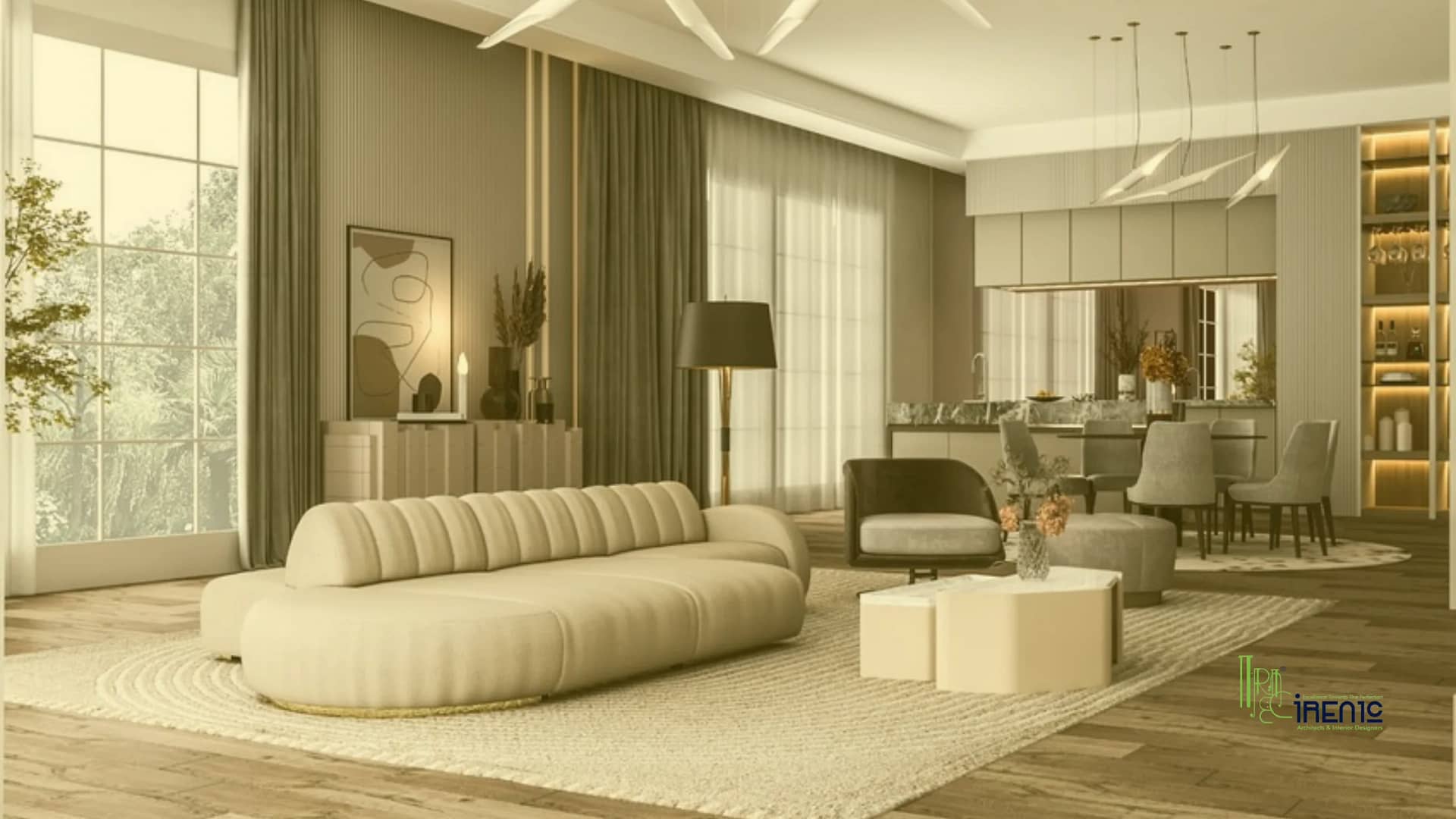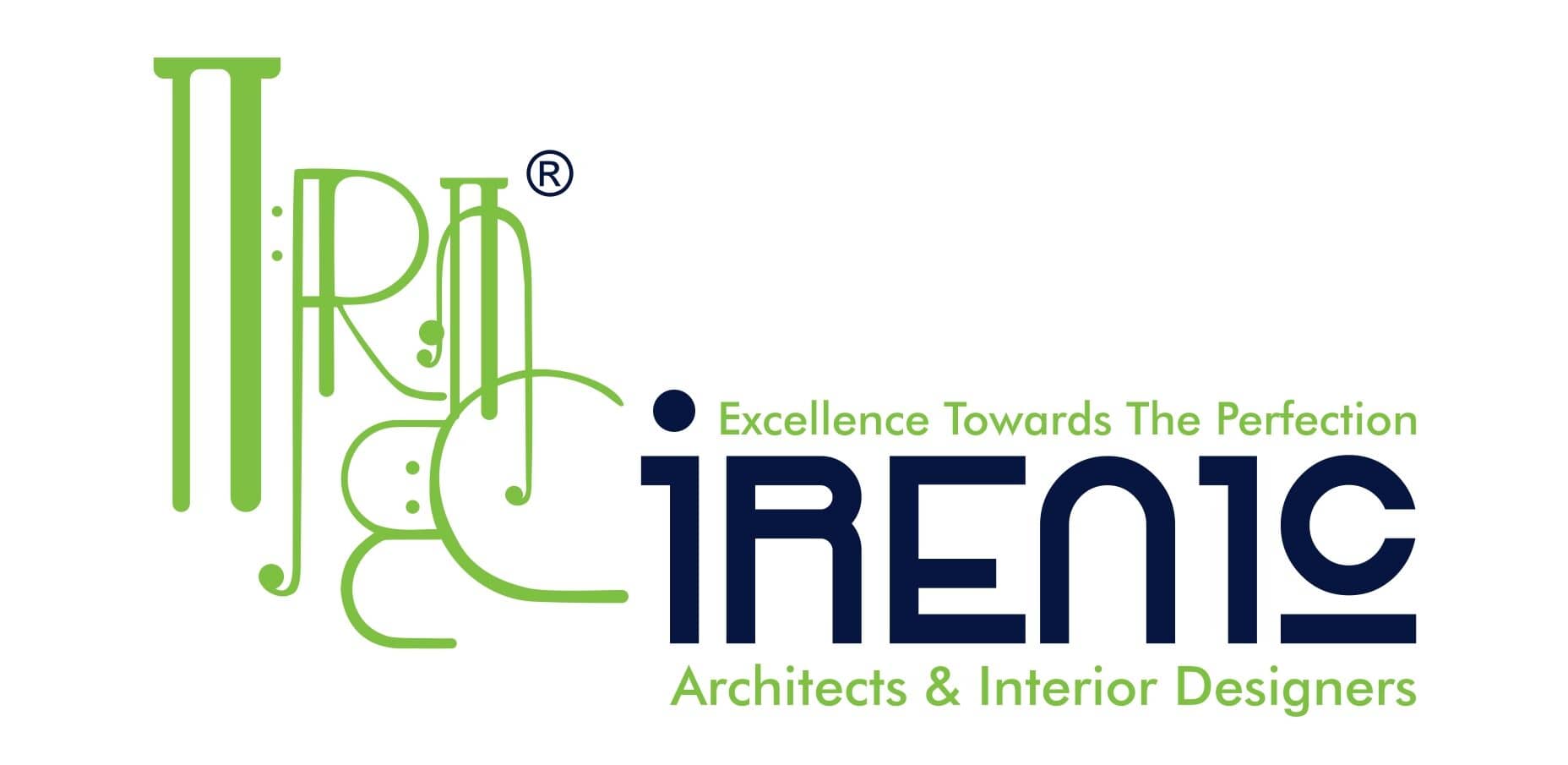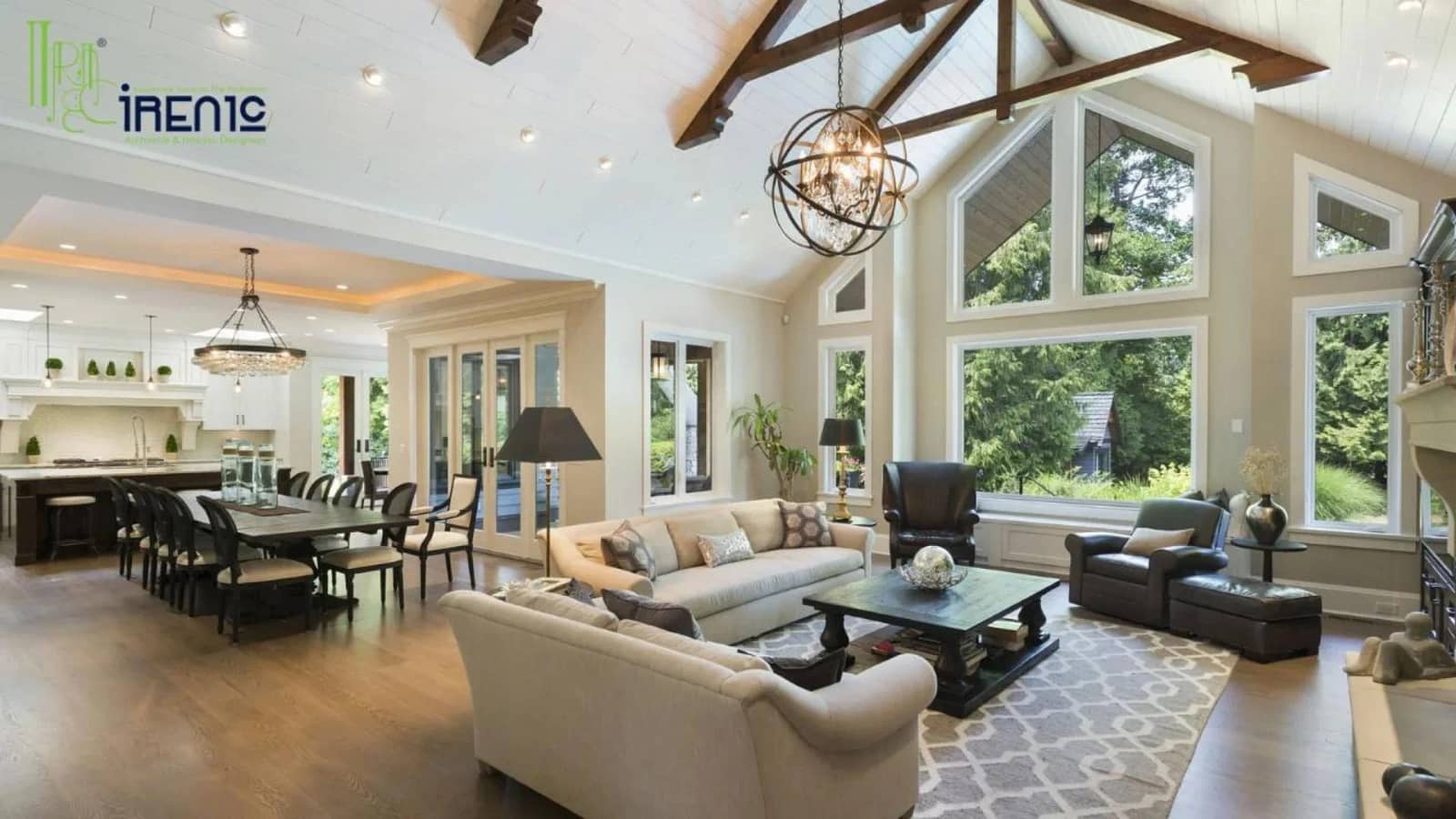Modern interior design offers a timeless appeal for those who appreciate simplicity, functionality, and elegance in their living spaces. In this comprehensive guide, we’ll delve deeper into the world of modern style, exploring its key elements and how professional interior designer services can transform your home or commercial space into a beautifully designed haven. Whether you’re revamping your design studio, updating your commercial interior, or simply seeking fresh design ideas, design service, interior design services, interior decoration, interior decorators, design firm, residential interior, commercial interior design, modern style offers a myriad of possibilities to suit your needs and preferences.
Clean Lines and Minimalism

Emphasis on Functionality: Beyond just aesthetic appeal, modern design prioritizes functionality. Each piece of furniture serves a purpose, contributing to the overall usability of the space. For example, coffee tables may feature built-in storage, and sofas may have hidden compartments.
Spatial Organization: In addition to clean lines, modern design often emphasizes spatial organization. Built-in shelving units and modular furniture systems help maximize space utilization while maintaining a clutter-free environment.
Innovative Storage Solutions: To maintain the minimalist aesthetic, modern interiors often incorporate innovative storage solutions. This could include hidden cabinets, wall-mounted storage units, or furniture with built-in storage compartments.
Neutral Color Palettes

Layering Textures: While neutral colors dominate modern interiors, the use of different textures adds depth and visual interest to the space. For example, a neutral-colored sofa may be adorned with textured throw pillows, and a rug may feature a subtle pattern or weave.
Playing with Shades: Within the realm of neutral colors, modern design allows for experimentation with different shades and tones. Variations of whites, grays, and beiges can be used strategically to create a dynamic and nuanced color palette.
Monochromatic Schemes: For a minimalist yet impactful look, monochromatic color schemes are often employed in modern design. This involves using varying shades of a single color to create a cohesive and harmonious aesthetic.
Natural Materials and Textures
Sustainable Design Practices: In line with the growing emphasis on sustainability, modern interior design often incorporates eco-friendly materials such as reclaimed wood, bamboo, and recycled metal. These materials not only add warmth and character to the space but also promote environmental responsibility.
Biophilic Design Elements: Beyond just materials, modern interiors may integrate biophilic design principles to establish a connection with nature. This could involve incorporating indoor plants, natural light sources, and organic shapes to create a sense of tranquility and well-being.
Artisanal Craftsmanship: Handcrafted elements play a significant role in modern interior design, adding a sense of authenticity and uniqueness to the space. Whether it’s a handwoven rug or a hand-carved wooden sculpture, artisanal craftsmanship adds character and soul to modern interiors.
Open Floor Plans

Flexibility and Adaptability: Open floor plans offer flexibility and adaptability, allowing spaces to serve multiple functions seamlessly. For example, a living room may seamlessly transition into a dining area or home office, depending on the needs of the occupants.
Zoning Strategies: To delineate different areas within an open floor plan, modern design employs zoning strategies such as area rugs, furniture arrangement, and changes in ceiling height or flooring material. These subtle cues help define distinct spaces while maintaining a sense of openness.
Integration of Indoor and Outdoor Spaces: Modern design blurs the boundaries between indoor and outdoor spaces, creating a seamless connection with the surrounding environment. Sliding glass doors, outdoor living areas, and interior courtyards enhance the flow of natural light and air, enhancing the overall sense of openness and spaciousness.
Functional Furniture
Modularity and Versatility: Modern furniture is often characterized by modularity and versatility, allowing for easy customization and reconfiguration. Modular seating systems, modular shelving units, and convertible furniture pieces cater to evolving needs and preferences.
Ergonomic Considerations: In addition to aesthetics, modern furniture prioritizes ergonomic design principles to enhance comfort and well-being. Ergonomic chairs, adjustable desks, and supportive mattresses ensure optimal functionality without compromising on style.
Space-Saving Solutions: With the increasing trend towards urban living and smaller living spaces, modern furniture often incorporates space-saving solutions such as wall-mounted desks, foldable tables, and loft beds. These compact and multifunctional pieces maximize space utilization without sacrificing style or comfort.
Minimal Decor
Statement Lighting: In modern interiors, lighting serves as both a functional and decorative element. Statement lighting fixtures, such as pendant lights, chandeliers, and floor lamps, add visual interest and ambiance to the space while complementing the overall design aesthetic.
Geometric Patterns: While modern design favors simplicity, geometric patterns can be used sparingly to add a touch of visual intrigue. Whether it’s a geometric rug, wallpaper, or artwork, these patterns create focal points within the space without overwhelming the minimalist aesthetic.
Personalized Accents: Minimal decor doesn’t mean devoid of personality. Modern interiors may incorporate personalized accents such as family photographs, cherished artworks, or heirloom pieces to imbue the space with a sense of individuality and warmth.
Technology Integration

In modern interiors, technology seamlessly integrates into the design to enhance functionality and convenience. Smart home systems, such as automated lighting, temperature control, and security systems, offer a seamless and intuitive user experience while minimizing visual clutter.
Built-in charging stations, hidden outlets, and cable management solutions ensure that technology remains discreetly integrated into the space, maintaining the clean and streamlined aesthetic of modern design.
Innovative gadgets and appliances, such as touchless faucets, voice-controlled assistants, and integrated entertainment systems, elevate the modern living experience, offering both practicality and sophistication.
Sustainable Design Practices
Sustainability is a cornerstone of modern interior design, with a growing emphasis on eco-friendly materials, energy efficiency, and responsible manufacturing processes.
Renewable materials, such as bamboo, cork, and recycled glass, are favored for their low environmental impact and aesthetic appeal. These materials are often used in flooring, countertops, and furniture to promote sustainability without sacrificing style.
Energy-efficient lighting, appliances, and HVAC systems help reduce energy consumption and minimize the environmental footprint of modern interiors. Additionally, passive design strategies, such as strategic placement of windows for natural ventilation and daylighting, further enhance energy efficiency and occupant comfort.
Biophilic Design Elements
Biophilic design principles are integral to modern interior design, aiming to foster a deeper connection with nature and improve overall well-being.
Indoor plants, living green walls, and nature-inspired artwork bring elements of the outdoors inside, creating a sense of tranquility and rejuvenation. These biophilic elements not only enhance visual appeal but also purify the air and promote better indoor air quality.
Views of nature, access to natural light, and incorporation of natural materials evoke a sense of harmony with the surrounding environment, reducing stress and enhancing cognitive function.
Innovative Materials and Finishes

Modern interior design embraces innovative materials and finishes that push the boundaries of traditional design aesthetics. High-tech materials, such as carbon fiber, fiberglass, and acrylic, offer durability, versatility, and sleek aesthetics.
Metallic finishes, such as brushed brass, matte black, and polished chrome, add a touch of glamour and sophistication to modern interiors. These finishes are often used in fixtures, hardware, and accents to create visual interest and contrast.
Textured wall treatments, such as exposed brick, concrete, and plaster, add depth and character to modern spaces. These tactile surfaces create a sense of warmth and tactility, inviting tactile exploration and engagement.
Cultural Influences and Global Design Trends
Modern interior design is influenced by global design trends and cultural influences from around the world. Scandinavian minimalism, Japanese Zen, and Mediterranean chic are just a few examples of design styles that have left their mark on modern interiors.
Cultural artifacts, textiles, and motifs can be incorporated into modern spaces to add a sense of cultural richness and diversity. From Moroccan rugs to Indian tapestries, these elements infuse the space with personality and charm.
Global design trends, such as hygge (coziness and comfort), wabi-sabi (imperfection and impermanence), and lagom (balance and moderation), offer guiding principles for creating inviting and harmonious modern interiors.
Artificial Intelligence and Smart Home Integration
Artificial intelligence (AI) plays an increasingly prominent role in modern interior design, with the emergence of AI-powered design tools and virtual assistants.
AI algorithms analyze user preferences, lifestyle patterns, and design trends to generate personalized design recommendations and solutions. These AI-driven insights help streamline the design process and optimize space utilization.
Smart home integration enables seamless connectivity and control of various home systems, from lighting and climate control to entertainment and security. Voice-activated assistants, such as Amazon Alexa and Google Assistant, offer hands-free interaction and automation, enhancing convenience and comfort in modern interiors.
Flexible Workspaces and Home Offices
In response to the rise of remote work and flexible schedules, modern interior design prioritizes the creation of functional and inspiring home office spaces.
Flexible workspaces feature adaptable furniture solutions, such as height-adjustable desks, ergonomic chairs, and modular storage units, to accommodate varying work styles and preferences.
Designated home office areas may be seamlessly integrated into living spaces or strategically positioned in underutilized areas, such as alcoves or corners, to maximize space efficiency.
Inspirational elements, such as motivational artwork, personalized decor, and comfortable seating options, promote productivity, creativity, and well-being in modern home offices.
Multifunctional Design Solutions
Multifunctional design solutions are a hallmark of modern interior design, enabling spaces to serve multiple purposes without sacrificing style or comfort.
Convertible furniture, such as sofa beds, extendable dining tables, and folding chairs, provide versatility and flexibility in modern interiors, allowing spaces to adapt to changing needs and activities.
Transformable spaces, such as sliding partitions, collapsible walls, and retractable screens, offer privacy and spatial delineation when needed, while maintaining an open and airy feel.
Integrated storage solutions, such as built-in cabinets, hidden compartments, and wall-mounted shelving systems, optimize space utilization and minimize clutter in modern interiors.
Wellness-Focused Design Principles

Wellness-focused design principles are gaining traction in modern interior design, emphasizing the importance of creating environments that promote physical, mental, and emotional well-being.
Biophilic elements, such as natural light, indoor plants, and organic materials, contribute to a sense of calmness, connection, and vitality in modern interiors.
Ergonomic furniture, circadian lighting, and acoustical treatments address ergonomic concerns, reduce stress, and enhance comfort in modern living spaces.
Mindful design practices, such as decluttering, organizing, and creating serene retreats, support relaxation, mindfulness, and stress reduction in modern interiors.
Community Spaces and Social Connectivity
Modern interior design extends beyond individual living spaces to include communal areas that foster social interaction, collaboration, and community engagement.
Shared amenities, such as rooftop gardens, co-working spaces, and lounge areas, encourage residents to connect, network, and build relationships in modern residential developments.
Flexible event spaces, such as multipurpose halls, game rooms, and entertainment lounges, accommodate diverse activities and gatherings, promoting a sense of belonging and inclusivity.
Thoughtfully designed common areas, such as courtyards, plazas, and pedestrian-friendly streetscapes, create opportunities for spontaneous encounters, serendipitous interactions, and meaningful connections in modern urban environments.
Cultural Sensitivity and Inclusivity
Modern interior design embraces cultural sensitivity and inclusivity, recognizing the diverse backgrounds, traditions, and values of its occupants.
Inclusive design practices, such as universal design principles, accessible features, and barrier-free environments, ensure that modern interiors are welcoming and accommodating to people of all ages, abilities, and backgrounds.
Cultural references, ethnic motifs, and indigenous materials may be incorporated into modern interiors to celebrate diversity, honor heritage, and promote cross-cultural exchange.
Sensory design elements, such as aromatherapy, music therapy, and tactile experiences, engage the senses and create inclusive environments that resonate with a wide range of individuals in modern interiors.
Artisanal Craftsmanship and Handmade Elements
Modern interior design often celebrates artisanal craftsmanship and handmade elements, emphasizing the beauty of imperfection and the authenticity of human touch.
Handcrafted furniture, textiles, ceramics, and artwork add character, charm, and soul to modern interiors, creating a sense of warmth and individuality.
Collaborations with local artisans, craftsmen, and artists support traditional skills, cultural heritage, and sustainable practices in modern design, fostering a deeper connection between creators and consumers.
Adaptive Reuse and Sustainable Renovation
Adaptive reuse and sustainable renovation are central tenets of modern interior design, promoting the preservation, revitalization, and repurposing of existing structures and materials.
Historic buildings, industrial warehouses, and heritage sites are transformed into modern living spaces, offices, and cultural venues, blending heritage architecture with contemporary design sensibilities.
Salvaged materials, reclaimed wood, and upcycled furniture are creatively repurposed in modern interiors, reducing waste, minimizing environmental impact, and adding a sense of history and character to the space.
Psychological Comfort and Emotional Well-being
Modern interior design prioritizes psychological comfort and emotional well-being, creating environments that nurture, support, and inspire occupants.
Soft, soothing color palettes, natural materials, and diffused lighting contribute to a sense of serenity, safety, and relaxation in modern living spaces.
Personalized elements, such as family photographs, heirlooms, and cherished mementos, evoke nostalgia, connection, and emotional resonance in modern interiors, fostering a sense of belonging and identity.
Designing for Resilience and Adaptability

Modern interior design embraces resilience and adaptability, recognizing the importance of designing spaces that can withstand changing environmental conditions, societal needs, and technological advancements.
Flexible layouts, modular furniture, and adaptable infrastructure allow modern interiors to evolve and respond to shifting requirements, preferences, and lifestyles over time.
Future-proofing strategies, such as energy-efficient design, sustainable materials, and universal accessibility, ensure that modern interiors remain relevant, functional, and resilient in the face of uncertainty and change.
Holistic Design Approaches and Interdisciplinary Collaboration
Modern interior design adopts holistic approaches and interdisciplinary collaboration, integrating diverse perspectives, expertise, and disciplines to create cohesive and integrated solutions.
Collaboration between architects, interior designers, landscape architects, engineers, and other professionals fosters innovation, creativity, and synergy in modern design projects, resulting in holistic and harmonious environments.
Integrative design processes, such as Building Information Modeling (BIM), Integrated Project Delivery (IPD), and Design Thinking, encourage cross-disciplinary collaboration, stakeholder engagement, and user-centered design in modern interiors.
Designing for Multigenerational Living and Aging in Place
Modern interior design addresses the needs of multigenerational households and aging populations, creating inclusive, accessible, and adaptable spaces that accommodate diverse age groups and abilities.
Universal design principles, such as barrier-free layouts, slip-resistant flooring, and ergonomic fixtures, enhance safety, comfort, and independence in modern interiors, allowing occupants to age in place with dignity and autonomy.
Flexible living arrangements, such as granny flats, accessory dwelling units (ADUs), and multigenerational suites, provide options for intergenerational cohabitation and support in modern residential developments.
Modern Style in Different Spaces
1. Living Room
A modern design focuses on clean lines, neutral colors, and functional furniture. Adding a few accent pieces like a bold-colored rug or contemporary art can make the space lively yet cohesive.
2. Dining Room
A modern features sleek furniture, often with glass or metal elements. A minimalist dining table paired with stylish chairs and subtle lighting creates an elegant space for meals and gatherings.
3. Modular Kitchen
Modern kitchens emphasize efficiency and style. A modular kitchen design includes sleek cabinetry, integrated appliances, and ample counter space. Using high-quality materials like quartz or granite adds a touch of luxury to the functional space.
4. Room Interior Design
Every room in your home can benefit from modern design principles. Whether it’s the bedroom, bathroom, or home office, keeping the decor minimal and functional ensures a serene and stylish environment.
5. Office Interior
Modern focus on productivity and comfort. Clean lines, ergonomic furniture, and ample natural light create a conducive work environment. Incorporating plants and artwork can add a personal touch to the professional space.
6. Commercial Interior
For commercial spaces, modern design translates to professional and inviting environments. Whether it’s a retail store, restaurant, or office building, modern design uses sleek materials, efficient layouts, and contemporary decor to enhance the customer experience
In our next blog post, we’ll explore the timeless appeal of minimalism and how it can bring a sense of contemporary elegance to your home. From decluttering your space to embracing clean lines and neutral colors, we’ll delve into the principles of minimalist design and share practical tips for incorporating them into your interior aesthetic.
FAQ


